Advanced Cinematography Techniques
A course by David Curto , Cinematographer

Learn lighting techniques to be able to develop the look of any audiovisual project in a professional way
The lens, the framing, and the color temperature are just some of the decisive elements that can help an image convey the emotions that the director intended. David Curto, a cinematographer who has worked with producers like Netflix, teaches you how to master the skills needed to face any audiovisual project.
In this course, learn advanced lighting and camera concepts to apply in your productions and tell your story effectively from a technical, emotional, and narrative point of view. Go one step further than David's first course, Introduction to Film Photography Direction, and discover how to light your sets like a professional.
What will you learn in this online course?
15 lessons & 22 downloads
- 98% positive reviews (330)
- 16,791 students
- 15 lessons (1h 38m)
- 22 additional resources (8 files)
- Online and at your own pace
- Available on the app
- Audio: Spanish, English, French, Italian, Portuguese, Turkish
- Spanish · English · Portuguese · German · French · Italian · Polish · Dutch · Turkish · Romanian · Indonesian
- Level: Intermediate
- Unlimited access forever
What is this course's project?
Tell a story by making a short piece—documentary or fiction—in which you apply the techniques and concepts learned throughout the course.
Projects by course students
Who is this online course for?
All photography, cinema, and image lovers in general. Also, people who work in the audiovisual field and want to acquire new knowledge to apply in their projects.
Requirements and materials
To take this course, you will need knowledge of the basic concepts of photography.
In terms of materials, you will need a computer, editing software, a phone or video camera, and the light sources that you would like to use in your project, from a common lamp to professional equipment.

Reviews

David Curto
A course by David Curto
David Curto is in love with cinema and photography. He studied at the Higher School of Cinema and Audiovisual of Catalonia (ESCAC). A native of Spain, in 2010 he moved to Colombia, where he lived for 8 years. He currently divides his time between the two countries.
He has worked for brands such as Motorola, Honda, Ford, Avianca, Nestlé, and Heineken and has filmed music videos for artists like Sebastian Yatra, David Bisbal, Juan Magán, Aitana, Ana Guerra, Lalo Ebratt, Greeicy, Tini, and others. He worked as the director of photography on films such as The Boy by Craig Macnaill, Fucking Games and Anthropos by Spiros Stathoulopoulos, and Bad Lucky Goat by Samir Oliveros, presenting the latter worldwide at the SXSW festival in Austin (USA).
Content
-
U1
Introduction
-
Presentation
-
Influences
-
What will we do in the course?
-
-
U2
Materials and technical tools
-
Spherical and anamorphic optics
-
Sensitometry
-
Camera sensors
-
Types of light
-
Light conditions
-
-
U3
Filming
-
Assembling the set
-
Shooting the sequence shot
-
Shooting of several planes
-
-
U4
Everything makes sense in the "post"
-
Color spaces
-
How to do a LUT
-
Colorization
-
Final piece
-
-
FP
Final project
-
Advanced Cinematography Techniques
-
What to expect from a Domestika course
-
Learn at your own pace
Enjoy learning from home without a set schedule and with an easy-to-follow method. You set your own pace.
-
Learn from the best professionals
Learn valuable methods and techniques explained by top experts in the creative sector.
-
Meet expert teachers
Each expert teaches what they do best, with clear guidelines, true passion, and professional insight in every lesson.
-
Certificates
PlusIf you're a Plus member, get a custom certificate signed by your teacher for every course. Share it on your portfolio, social media, or wherever you like.
-
Get front-row seats
Videos of the highest quality, so you don't miss a single detail. With unlimited access, you can watch them as many times as you need to perfect your technique.
-
Share knowledge and ideas
Ask questions, request feedback, or offer solutions. Share your learning experience with other students in the community who are as passionate about creativity as you are.
-
Connect with a global creative community
The community is home to millions of people from around the world who are curious and passionate about exploring and expressing their creativity.
-
Watch professionally produced courses
Domestika curates its teacher roster and produces every course in-house to ensure a high-quality online learning experience.
FAQs
What are Domestika's online courses?
Domestika courses are online classes that allow you to learn new skills and create incredible projects. All our courses include the opportunity to share your work with other students and/or teachers, creating an active learning community. We offer different formats:
Original Courses: Complete classes that combine videos, texts, and educational materials to complete a specific project from start to finish.
Basics Courses: Specialized training where you master specific software tools step by step.
Specialization Courses: Learning paths with various expert teachers on the same topic, perfect for becoming a specialist by learning from different approaches.
Guided Courses: Practical experiences ideal for directly acquiring specific skills.
Intensive Courses (Deep Dives): New creative processes based on artificial intelligence tools in an accessible format for in-depth and dynamic understanding.
When do the courses start and when do they finish?
All courses are 100% online, so once they're published, courses start and finish whenever you want. You set the pace of the class. You can go back to review what interests you most and skip what you already know, ask questions, answer questions, share your projects, and more.
What do Domestika's courses include?
The courses are divided into different units. Each one includes lessons, informational text, tasks, and practice exercises to help you carry out your project step by step, with additional complementary resources and downloads. You'll also have access to an exclusive forum where you can interact with the teacher and with other students, as well as share your work and your course project, creating a community around the course.
Have you been given a course?
You can redeem the course you received by accessing the redeeming page and entering your gift code.



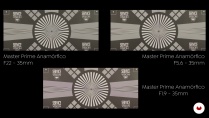
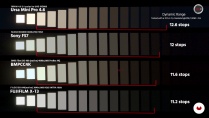
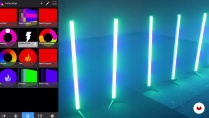
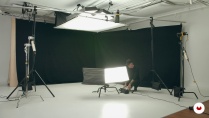
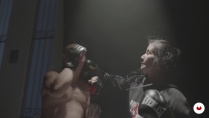
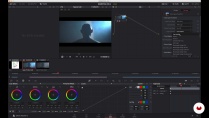




Brutalll!!!
Excellent Knowledge!
Una excelente visión preliminar del proceso de gestión y ajuste de color en la post-producción de material audiovisual.
conceptos are interesantes
Gran introducción al trabajo de planeación e modificación de colorimétrica de un video